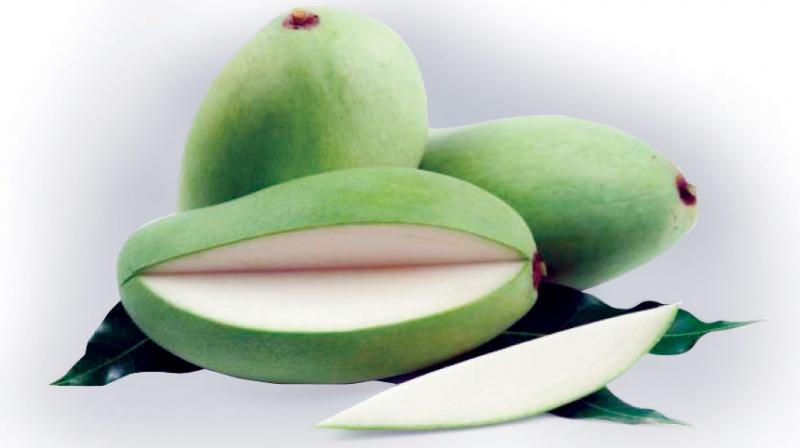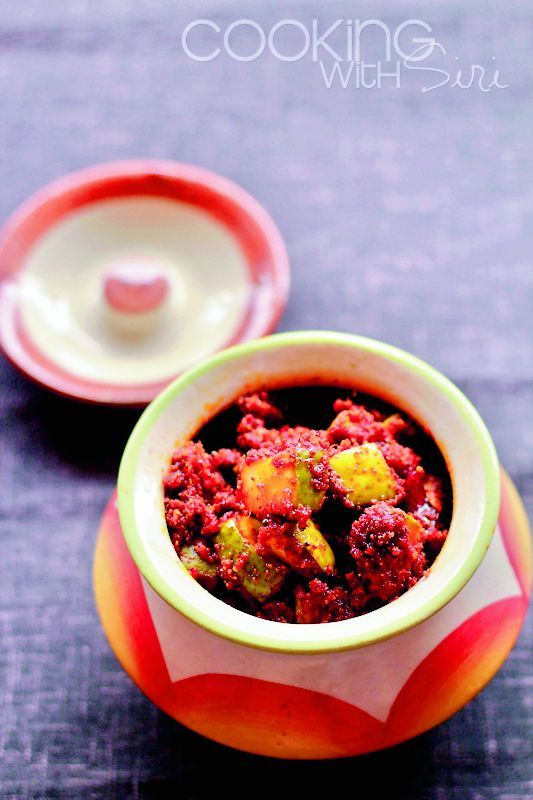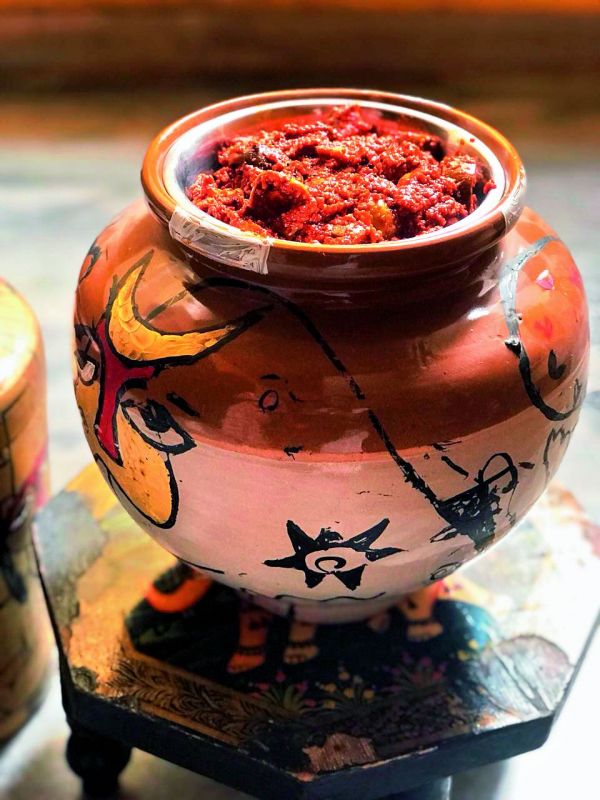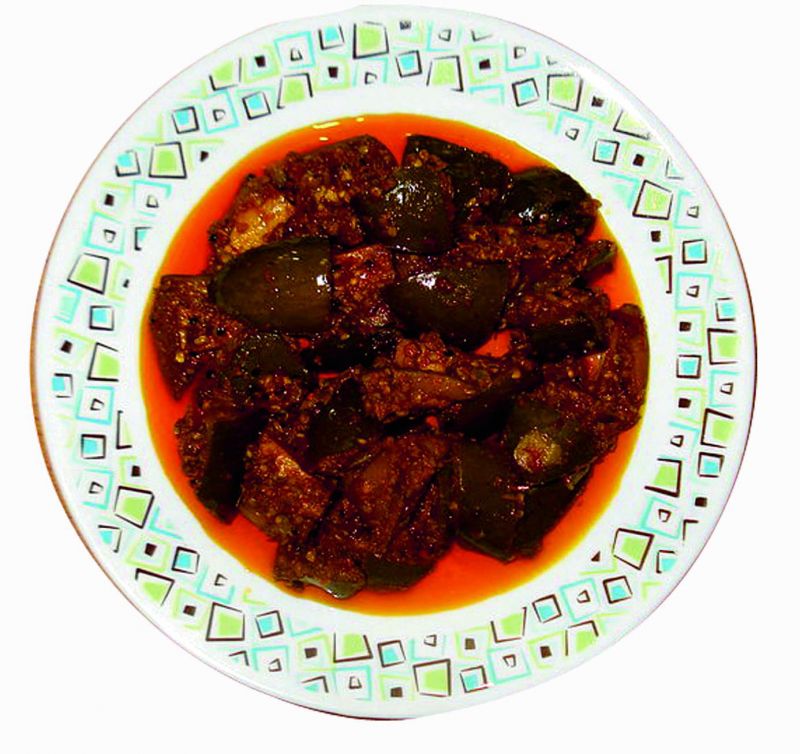Avakai Nostalgia
This summer try making these traditional Pickles at home.

What do summer holidays bring? In India, the almost-unbearable scorching heat also brings loads of delicious fruits, including the king of them all, the mango!
To me, summer evokes many food and family memories. Especially of those when my grandparents, cousins, uncles and aunts used to meet up at our native place. And then we all would prepare the avakai (pickle). This Andhra tradition revolves around the raw mango — special types go into the regular avakai, the maagai, the thokkudu pacchadi, bellam (jaggery) avakai…the list goes on with each family using some secret ingredient, or a different proportion.
Vendors for all pickle ingredients used to come home. Sometimes we would use a special variety of raw mangoes from our own farms, and that made the pickle festivities even more enchanting!
Both my grandmas (ammama and naanama) surveyed each mango carefully — turning over each one lovingly before dropping them into the “ok” basket. They also insisted on the chilli powder from only one vendor for authentic colour, and flavour.
While mixing, no metal spoons were used (otherwise oxidation or blackening of the fruit could occur) and only trusted porcelain jars (jaadis) would be used to store this precious, annual treasure. Children would be given flat seashells (alchippas) that could be rubbed on the ground to make a natural peeler. This mango peeling task was delightfully accepted and playfully executed!
Only certain people could mix the pickle ingredients too, and women took pride in being known for their avakai! What an awesome example of slow cooked food, where tradition, pride, perfect ingredients, and memories were created, year after year!
West godavari Avakai recipe
INGREDIENTS
6 cups fresh green raw mangoes, chopped into big chunks
1 cup mustard seeds, powdered freshly
2 tbsp whole jeera
2 cups red chilli powder
1 cup salt
50 garlic pods
3 cups sesame oil

Method
Put the chopped mango pieces in a wide bowl and add in the freshly ground mustard seeds powder, red chilli powder, whole jeera and salt. Mix well.
Now add two cups of sesame oil. Mix all the ingredients along with the mango pieces well. Add in the garlic pods and mix well. Now, transfer the mango avakaya into traditional ceramic jars .
Add one cup of oil on top, cover with a lid and tie a white muslin cloth over the lid. After three days using a clean and dry ladle stir the mango avakaya. Taste the pickle and if necessary add more salt and oil. On the fourth day the mango avakaya is ready to eat.
Serve mouth-watering mango avakaya pickle with steaming hot rice and ghee or fresh homemade butter.
TIP: If you are making it in a smaller quantity you can grind the mustard seeds at home in a coffee grinder. Note that the mustard seeds must be ground only on the day you are making the pickle. Otherwise it will be bitter. Also, buy only
the avakai mustard seeds
Khatta Aam Ro Achar
INGREDIENTS
2 cups of raw mango, diced
100 gm red chilli powder
100 gm mustard powder
1 tbsp hing
100 gm salt
1¼ cup oil
1½ tbsp methi seeds
1 tbsp jeera
10 black pepper

Method
Take a bowl and add one cup red chilli powder, one cup mustard powder and a little less than¾ cup powdered crystal salt and mix it. Add this mixture to a wide bowl such that it is filled to the brim. This wide bowl can be your measuring bowl for the mango pieces too.
Add the rest of the ingredients and mix well. Now transfer the mixture in another jar and tie the lid with a clean muslin cloth. Put the jar regularly in the sun for at least a week.
TIP: The thumb rule here is that whatever measure you use for measuring your mango pieces, the same measure should be used for the mixture of spice powders (red chili powder, mustard powder and salt) too. In other words, if you use a cup to measure mangoes, use the same cup for the spices.
Bellam Avakai
INGREDIENTS
1 kg raw mango pieces (choose a variety with a lot of fibre and mango should be hard)
100 gm organic chilli powder
100 gm organic jaggery owder
100 gm organic mustard seed powder
75 gm sea salt
25 gm organic fenugreek seeds
100 gm organic garlic cloves (don’t peel the skin)
½ lt organic cold pressed sesame oil

Method
Let the mango pieces be covered in oil. Don’t use all the oil yet. Mix all the spices together and then mix it with mango pieces. Let the mixture sit for a day in a non metal container and then store in jaadi and cover with rest of the oil. It will be ready to use after two days. Adjust salt per your taste. If preserved correctly, you will be able to enjoy this pickle the whole year.
How to pick a perfect ripe mango
Texture: This is pretty straightforward. For most mangoes, the first stage of ripening involves mangoes getting nice and soft — the same feel as a ripe avocado.
Colour: The mango will go from green to some shade of yellow/orange. The mango doesn’t have to be fully orange, but it should have mostly orange or yellow spots. The big exception to this rule is the Tommy Atkins variety, which will not change colour.
Fragrance and sap: This is the most important tell for when a mango is ready to eat — it will get very fragrant and ooze sap without prodding. For the most part, regardless of texture or colour, if a mango is filling the room with fragrance and also sapping, it’s ready to eat. The major exception here is the Ataulfo, which may not turn super fragrant or sappy even when it is fully ripe. Instead, it gets wrinkly — that the sign that it’s ready to go.
The colour of the pickle will depend on the type of chilli powder and mustard powder used. If you use kashmiri or bandar chilli powder you will get a lovely bright orange red shade

